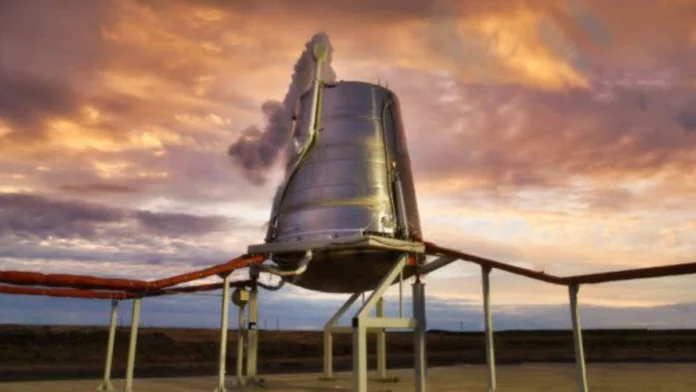Stoke Space, a four-year-old Seattle-area firm, today achieved a significant victory in its effort to construct a fully reusable launch system with the execution of a successful up-and-down test of its “Hopper” experimental rocket vehicle.
At 11:24 a.m. PT, Hopper2 completed a 15-second flight at Stoke’s test site at Grant County International Airport in Moses Lake, Washington. According to Stoke CEO Andy Lapsa, the test vehicle was launched 30 feet into the air by a hydrogen-fueled rocket engine and landed 15 feet from the launch pad.
It’s the final test in our Hopper development program, and by all accounts, it’s been a great success, according to Lapsa.
The work done this spring with the Hopper1 early prototype and the static engine firing for Hopper2 is continued with today’s test.
“We’ve now learned everything we were looking for from this dev test vehicle to finalize the orbital design,” Stoke Space wrote in a post on September 12 on X/Twitter. nonetheless, we’re going to jump it as the cherry on top.
“This Hopper program was geared to develop the reusable second-stage system, and specifically prove out a lot of the new and novel technology elements that go into it,” Lapsa said today. The heat shield is actively and regeneratively cooled. We have a highly distinctive rocket engine with a single turbomachinery system that supplies several thrusters. The heat shield and the engine are connected.
According to Lapsa, Stoke Space’s rocket might be the first to employ differential-thrust vector control for attitude control since the final Soviet N1 moon rocket employed that technique in 1972.
Stoke’s team had to undergo a challenging learning curve in launch logistics in addition to putting the technological improvements to the test. The development of operating procedures, ground support tools, guidance, navigation, and control, as well as flight software, flight computers, and communications, is all new for our little firm, according to Lapsa. Although our squad is incredibly skilled, this is the first time we have done all of these things as a Stoke team.
Lapsa, a former employee of Jeff Bezos’ Blue Origin space company, and Tom Feldman, who had previously interned at SpaceX before working at Blue Origin, established Stoke Space in 2019. The firm has a 21,000-square-foot engineering and production headquarters in Kent, Washington, not far from Blue Origin’s headquarters, in addition to the testing facilities at the airfield in Moses Lake.
In 2021, the business secured $65 million in capital from Breakthrough Energy Ventures, a firm co-founded by Microsoft co-founder Bill Gates. Earlier this year, Stoke received approval to assume control of Florida’s Launch Complex 14, which was the location of John Glenn’s historic Mercury launch in 1962.
According to Lapsa, Stoke’s team will concentrate more on creating the first stage of its rocket and expanding activities there in the future.
The first stage is the most crucial component of it, he added, adding that getting to orbit is currently the main goal. We’ll concentrate on early engine development. Although I would describe it as a custom-designed engine, it is not intended to be a unique or world-first invention.
A reusable launch system with a second stage that can be returned to Earth without the use of unusual shielding is what Stoke hopes to eventually provide.
The two-stage Starship launch vehicle being developed by SpaceX for missions beyond Earth orbit has been compared to the Stoke Space launch system in terms of principle. Using that analogy further, you might compare today’s Hopper mission to SpaceX’s Grasshopper test flights from 2012 and 2013 or the Starhopper testing from 2019.
Lapsa proclaimed his squad to be “incredibly proud” of him.
We’ve created everything, and the crew is incredible. This area of Moses Lake was a barren desert two and a half years ago. On a vehicle that took off and landed vertically today, we launched a brand-new hydrogen-oxygen engine, and it’s a pretty unusual engine, he added. “I believe everyone is ecstatic,”

